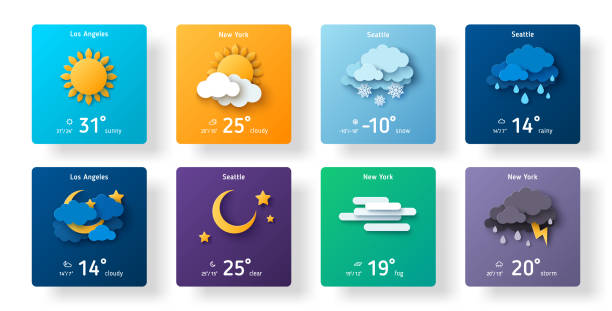If you live in an area prone to flooding or drought, you may hear references to something called a “hydrologic outlook” occasionally issued by meteorologists or hydrologists. But what exactly does this term mean?
A hydrologic outlook is a forecast that assesses the potential for high or low water conditions in coming weeks and months. By understanding what hydrologic outlooks cover and how to interpret them, you can better prepare for periods of expected flooding or drought in your local region.
Let’s explore these water forecasts in more depth – from what they indicate, to how they’re created, to why they matter for safety and planning.
What is a Hydrologic Outlook?
First, a definition:
“A hydrologic outlook is a long-range forecast that estimates the likelihood of unusually high or low water levels based on snowpack, precipitation, reservoir levels, and other indicators that impact the water supply.”
Hydrologic outlooks typically focus on the following:
- River flow forecasts
- Flood potential
- Water supply
- Drought
- Snowpack depth and melt
These projections usually cover a timeframe of one to three months into the future but can extend further when abnormal dry or wet weather patterns persist.
Hydrologic outlooks are most commonly issued by:
- The National Weather Service
- The USDA Natural Resources Conservation Service
- The U.S. Army Corps of Engineers
- State and local water agencies
The forecasts help the public and government officials prepare for changing water conditions over the coming weeks to months.
How are Hydrologic Outlooks Developed?
Several types of data go into creating a hydrologic outlook:
Historic patterns – Experts analyze past trends in precipitation, snowpack, streamflow and reservoir levels to identify typical variability and extremes.
Water supply measurements – Current snow depth, river flows, lake levels, reservoir volumes, groundwater reserves.
Weather forecasts – Long and short-term precipitation and temperature forecasts.
Snow water equivalent – The liquid water contained in snowpack used to estimate spring melt runoff.
Computer modeling – Sophisticated hydrologic models simulate possible scenarios.
Expert assessment – Forecasters synthesize the data using experience and knowledge of local conditions.
All this information is combined to predict the likelihood of reaching key flood stages, water shortage levels, or other defined thresholds in the coming months. The goal is giving advanced warning to guide preparedness.
What Does a Hydrologic Outlook Include?
A typical hydrologic outlook will contain a few key components:
Location – River basins, watersheds, reservoirs or regions the outlook covers.
Validity period – Weeks/months the forecast encompasses.
Projections – Probabilities of exceeding water thresholds like flood stage, low flow levels.
Supporting data – Graphics of snowpack, precipitation trends, river levels.
Summary – Plain language interpretation of expected high/low water risk.
Comparison to normal – Whether conditions are forecast to be above average, normal, or below average.
Limitations – Notes uncertainty and encourages monitoring future updates.
Graphs, maps and watershed data provide the backup for the probability and summary statements on the heightened danger or likelihood of drought or flooding in the specified locations and timeframes.
Examples and Visuals of Hydrologic Outcomes
To make the information more digestible, hydrologic outlooks incorporate graphics summarizing the key projections and data.
Some examples include:
River flow forecast graphs showing probability of exceeding levels like flood stage.
Maps of flood risk with different shading for above or below average risk areas.
Drought indicators showing short and long-term dryness trends.
Snow water equivalent measurements indicating total liquid inches contained in the current snowpack.
These visuals make comprehending the sometimes complex forecast data more intuitive for public consumption.
Reasons Hydrologic Outlooks are Issued
Hydrologic outlooks serve several important purposes:
- Provide advance notice of potential flooding or drought to the public and government decision makers. This allows time to enact preparedness measures before conditions worsen.
- Help water managers plan releases from reservoirs to have adequate supplies or buffer capacity for expected high or low precipitation.
- Guide flood and drought mitigation actions like upgrading infrastructure, public education, adding water use restrictions.
- Assist recreation planning by parks or wildlife agencies if high or low water will impact boat ramps, fish populations, trails.
- Allow farmers to anticipate water shortages that may impact irrigation for crops or livestock.
- Help community safety personnel stage equipment like sandbags, pumps, emergency shelters ahead of forecast flooding.
- Provide key data for longer-term climate analysis to identify trends and extremes.
By understanding the implications of the outlooks, people can take action to minimize harm and manage water needs over both the short and long-term.
Locating Hydrologic Outlooks for Your Area
Wondering where to find hydrologic outlooks for your region? Here are some go-to sources:
- National Weather Service Water Resources pages for conterminous US and Alaska
- USDA Natural Resources Water and Climate Center data and reports
- U.S. Army Corps of Engineers Water Management division information
- State water or environmental agency outlets like the California Water Resources Department
- Local river forecast centers like the North Central River Forecast Center covering the Midwest
Many outlets provide email alerts or social media updates when new hydrologic outlooks are issued as conditions change. Take advantage of these services to stay up to date on projections for your area.
Interpreting the Terminology of Hydrologic Outlooks
When reading through hydrologic outlooks, you may encounter some terminology that requires further explanation:
Percentile – Where a value ranks relative to the historical record. 90th percentile means only 10% of historical values were higher.
Exceedance probability – The percent chance of exceeding a specified threshold value.
Average, normal, mean – The central value within the historical record for that date or period.
Inflow – The amount of water flowing into a reservoir from streams, rainfall and runoff.
Outflow – Water released from a reservoir through dams, pumps and generators.
Forecast period – How far into the future the forecast estimates potentials – often 1-4 months.
Crest – The peak water level reached during a flood event.
Learning some of the common vocabulary used allows you to parse the technical details and make practical sense of the outlook for public preparedness and planning.
Limitations and Uncertainty with Hydrologic Outlooks
While hydrologic outlooks provide useful guidance, it’s important to understand their limitations:
- Long-range forecasts have inherent uncertainty. Actual conditions may differ as unforeseen factors emerge.
- Outlooks refer to probabilities like 25% or 60% chance of exceeding thresholds. This means outcomes are not guaranteed.
- Forecasts further in the future carry more uncertainty than short-term projections.
- Models cannot account for every variable that may arise like highly localized storms.
- Outlook accuracy relies on adequate monitoring data networks which have gaps in some regions.
Recognizing these constraints allows appropriate caution when making high-stakes decisions based on outlooks. Prudent use combines forecasts with continuous monitoring of real world conditions as events unfold.
Key Takeaways About Hydrologic Outlooks
To summarize key points about hydrologic outlooks:
- They are long-range forecasts of potential high or low water conditions.
- Outlooks estimate flood risk, drought potential, snowmelt runoff, and water supply over weeks to months.
- Experts analyze climate patterns, snowpack, reservoir levels and long-term records to generate the projections.
- The forecasts assist preparedness, recreation planning, agriculture, resource management and infrastructure protection.
- But uncertainty increases further into the future, so continuous monitoring is needed.
Understanding what hydrologic outlooks indicate allows you to use them as an early warning system and decision-making aid while recognizing their inherent limitations. These water forecasts provide invaluable support for safety and livelihoods dependent on weather and climate variability.
 Skip to content
Skip to content










